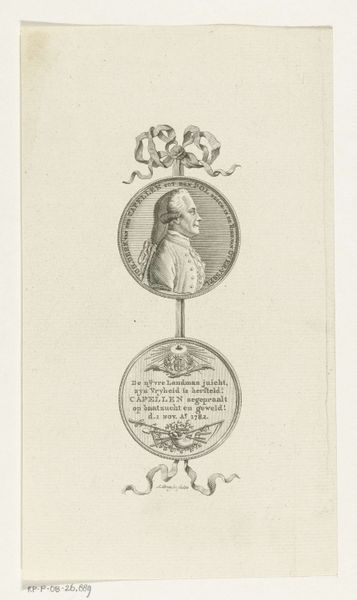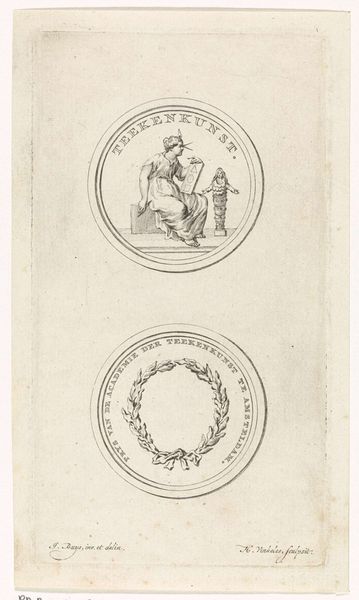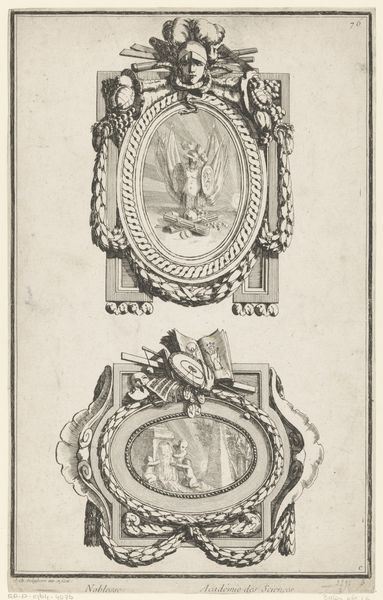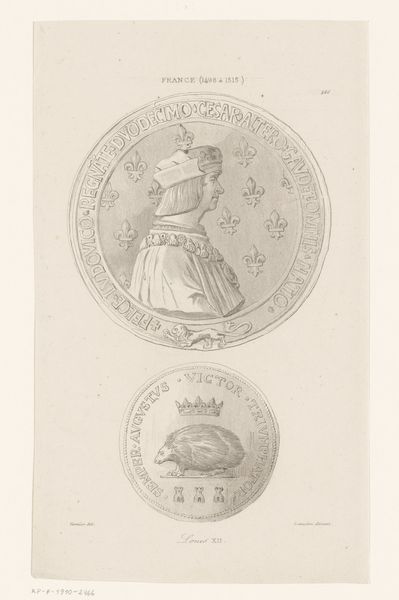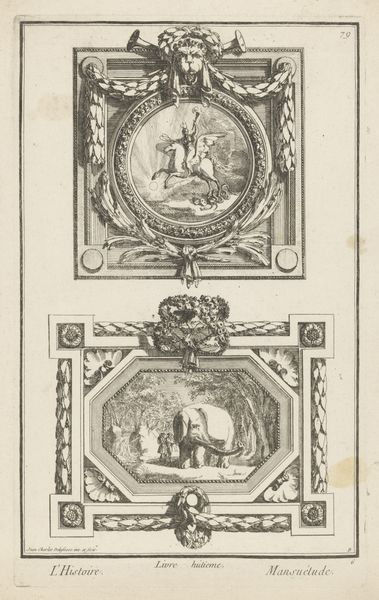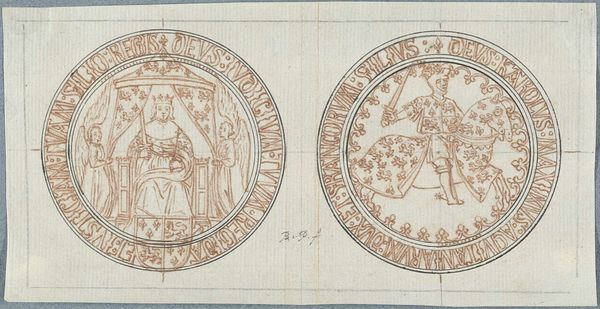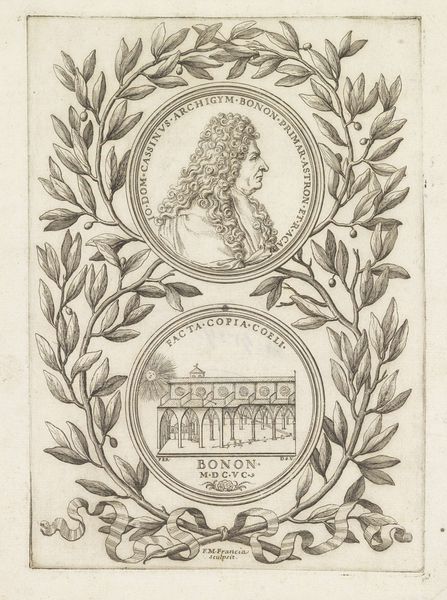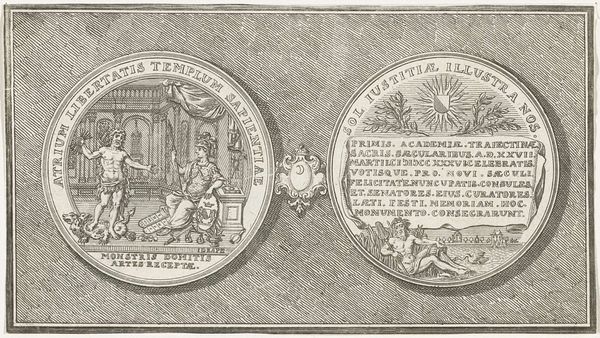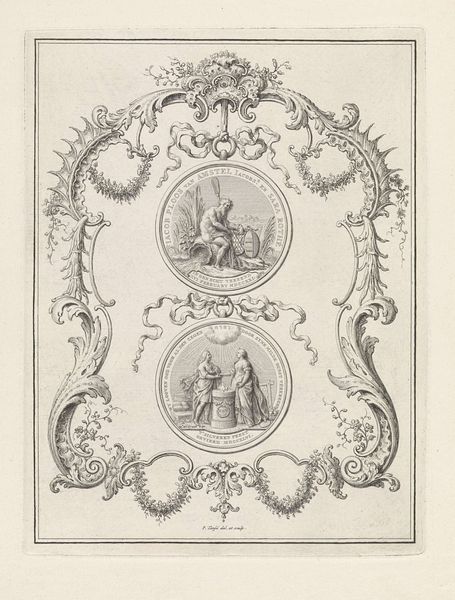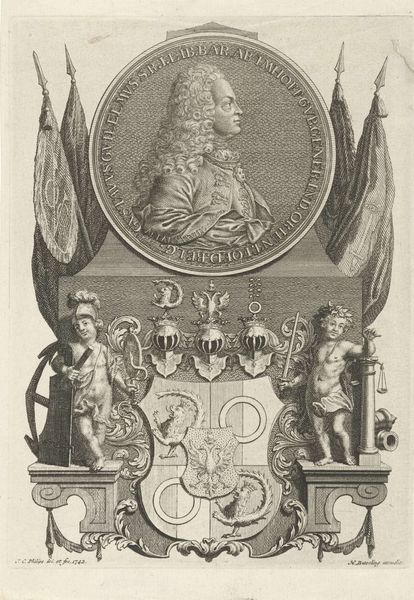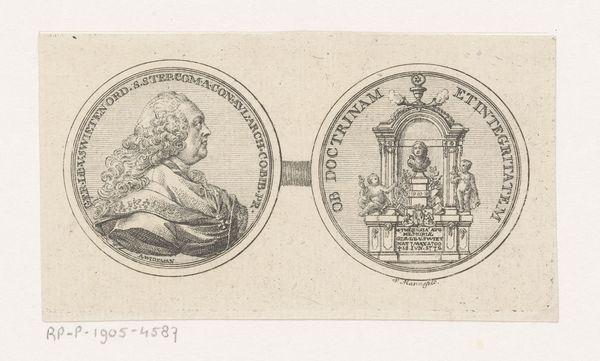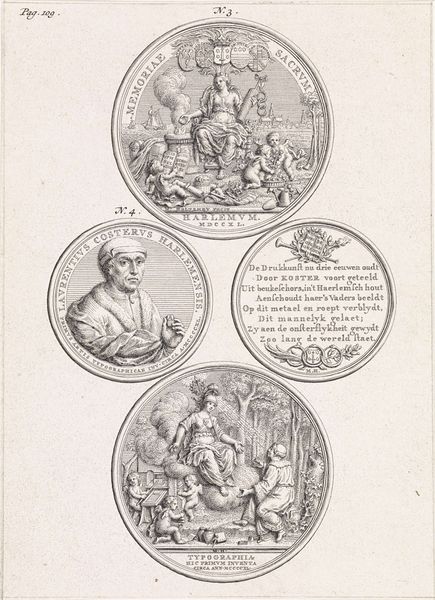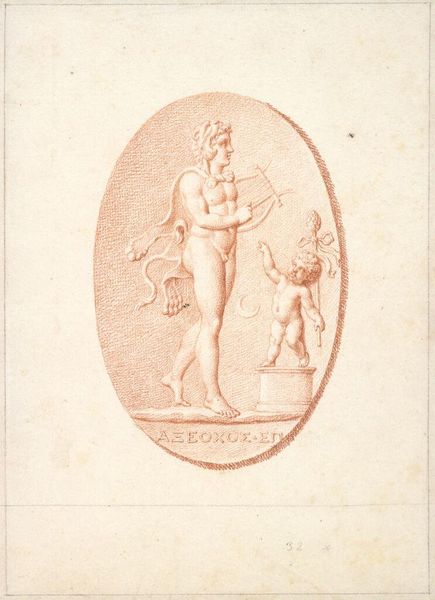
print, engraving
#
portrait
#
baroque
# print
#
old engraving style
#
figuration
#
classicism
#
line
#
history-painting
#
academic-art
#
engraving
Dimensions: height 134 mm, width 75 mm
Copyright: Rijks Museum: Open Domain
Curator: Here we have "Twee medaillons," or "Two Medallions," a print made by Carlo Faucci in 1756. It's executed in a meticulous engraving style. What catches your eye about it? Editor: Instantly, it’s the juxtaposition—the top medallion feels so serious, that portrait gazing off into the ether. And then, below, this playful, almost allegorical scene unfolds. It's as if the Enlightenment decided to commission a commemorative emoji. Curator: Right, the top medallion depicts Gerard van Swieten, a prominent physician and advisor to Empress Maria Theresa. Below we see symbolic elements tied to medicine and learning—a figure reading beneath a tree, classical architecture…it speaks to the means by which knowledge, especially medical knowledge, was constructed and disseminated. It speaks to institutions and their representational practices. Editor: I see it! So the guy in the portrait on top wasn't just some random aristocrat. Though there's a coldness to that rendering. Curator: It adheres to the conventions of portraiture prevalent at the time—intended to convey authority and intellect. Faucci, the engraver, would have likely reproduced this likeness from another source. Engravings served as an efficient way to circulate images and ideas widely. Consider it as an early version of mass media! Editor: But how fascinating—to reproduce someone’s portrait on, basically, a tiny advertisement. Like an engraved trading card, a means to consolidate prestige! Curator: Precisely. Think about the labor involved; the material production of this piece speaks volumes. It represents the tangible investment in crafting and disseminating this image of enlightened knowledge and governance. Editor: Okay, thinking about those delicate lines and how long it probably took someone to create it. Each line meant something, a physical expression and decision about someone’s reputation, immortalized on a copperplate. Fascinating, utterly fascinating! Curator: Exactly, Carlo Faucci transformed base metals and applied skill to immortalize a story we can see here today. I like it. Editor: Yes, me too. A true intersection of material reality, and personal storytelling that has a special flair.
Comments
No comments
Be the first to comment and join the conversation on the ultimate creative platform.
